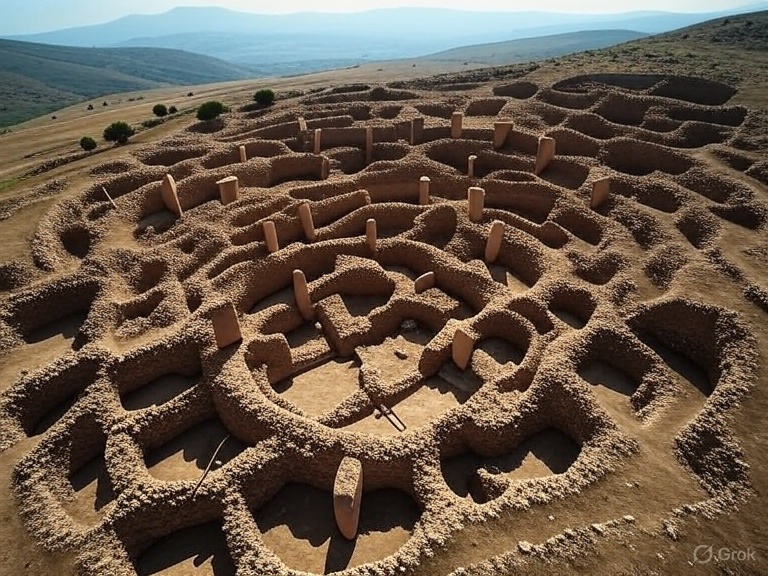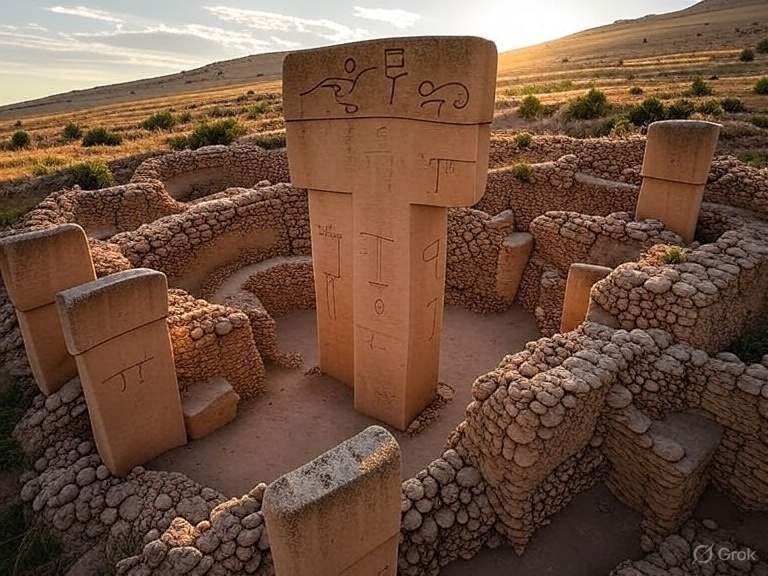Deep in southeastern Turkey lies a site that has challenged everything we thought we knew about early civilization: Göbekli Tepe. Dating back over 11,000 years, this archaeological wonder is older than Stonehenge and the Egyptian pyramids. Its discovery has forced historians and scientists to reconsider the origins of religion, society, and human innovation. Could it be the missing link that rewrites human history?
Discovery of a Forgotten Monument
In 1963, archaeologists from Istanbul University and the University of Chicago noticed unusual stone fragments near the city of Şanlıurfa. But it wasn’t until 1994, when German archaeologist Klaus Schmidt returned to investigate, that the site’s true significance emerged.
Excavations revealed massive T-shaped stone pillars, some weighing up to 20 tons, arranged in circular enclosures. Many of the stones were intricately carved with animals, abstract symbols, and humanoid figures — a level of artistry previously thought impossible for hunter-gatherer societies.
Göbekli Tepe immediately became one of the most important archaeological discoveries of the 20th century.
Why Gobekli Tepe Changes Everything
Until its discovery, the standard view of history suggested:
- Agriculture first, temples later. Early humans settled into farming communities, then developed religion and monumental architecture.
But Göbekli Tepe tells a different story:
- These temples predate farming by several millennia.
- Hunter-gatherers, not settled farmers, built massive stone sanctuaries.
- Religion and social rituals may have driven humans to invent agriculture, not the other way around.
This flips the traditional timeline of civilization on its head.

The Enigmatic Carvings
The carvings at Göbekli Tepe are unlike anything seen from its era. Animals such as lions, vultures, scorpions, and snakes dominate the stonework, along with abstract symbols that may have been early forms of communication or proto-writing.
Some scholars believe the carvings represent:
- Religious or shamanistic rituals — evidence of an early belief system.
- Cosmic symbolism — alignments with constellations, possibly mapping the night sky.
- Mythological storytelling — tales of creation, death, or cosmic order.
Intriguingly, a carving known as the “Vulture Stone” has been linked to astronomical events, possibly recording a comet impact around 10,950 BCE — an event some believe triggered the Younger Dryas ice age.
Engineering Feats of the Ancients
The sheer size of Göbekli Tepe’s structures raises questions: how did a society without metal tools or wheels build such a site?
- The T-shaped pillars weigh between 10 to 20 tons each.
- Moving and erecting them would require hundreds of workers.
- The organization needed suggests complex social structures far earlier than historians thought.
This level of engineering suggests that hunter-gatherers were far more advanced than previously assumed.
Why Was Göbekli Tepe Buried?
Perhaps the most baffling mystery is that Göbekli Tepe was intentionally buried around 8000 BCE.
- Archaeologists found that soil was deliberately used to cover the site.
- This preserved the pillars in remarkable condition.
- The reason remains unknown — was it ritual closure, cultural abandonment, or an attempt to hide sacred knowledge?
The deliberate burial adds an air of secrecy, hinting that the builders wanted to protect or preserve their legacy for the future.

Rewriting Human History
Göbekli Tepe challenges nearly every assumption about the rise of civilization:
- Religion before farming: Instead of farming leading to organized religion, it may have been the need for ritual spaces that pushed humans toward agriculture.
- Early social complexity: Large-scale projects required coordination, leadership, and shared belief systems — all hallmarks of civilization.
- Advanced symbolic thought: The carvings show that early humans had abstract thinking far earlier than imagined.
For these reasons, many historians now refer to Göbekli Tepe as the “world’s first temple” — and a site that rewrote the timeline of civilization.
Alternative Theories
While mainstream archaeology celebrates Göbekli Tepe as a hunter-gatherer temple, alternative theories suggest:
- A lost advanced civilization: Some argue the site’s complexity hints at knowledge inherited from an earlier, forgotten culture.
- Astronomical observatory: Its alignment with stars may indicate it served as a prehistoric observatory.
- Myth and memory: Legends of great floods and forgotten ages may be connected to the builders of Göbekli Tepe.
Though controversial, these theories highlight the mystique surrounding the site.
The Legacy of Göbekli Tepe
Today, Göbekli Tepe is a UNESCO World Heritage Site and continues to be excavated. Each new discovery reveals more about humanity’s distant past and raises fresh questions.
- It shows that early humans were far more capable, spiritual, and organized than previously believed.
- It bridges the gap between the Stone Age and the dawn of complex society.
- It suggests that our history may be deeper and richer than textbooks once allowed.
Göbekli Tepe reminds us that human civilization is not a straight line of progress but a tapestry full of forgotten chapters.
Conclusion
The mystery of Göbekli Tepe remains unsolved. Was it the world’s first temple, an ancient observatory, or evidence of a lost civilization? Whatever its purpose, it has forced historians to rethink humanity’s origins.
By proving that hunter-gatherers could build monumental structures long before agriculture, Göbekli Tepe has forever changed the story of human history.
As excavations continue, one thing is certain: this ancient site will keep challenging our understanding of who we are and where we came from.

